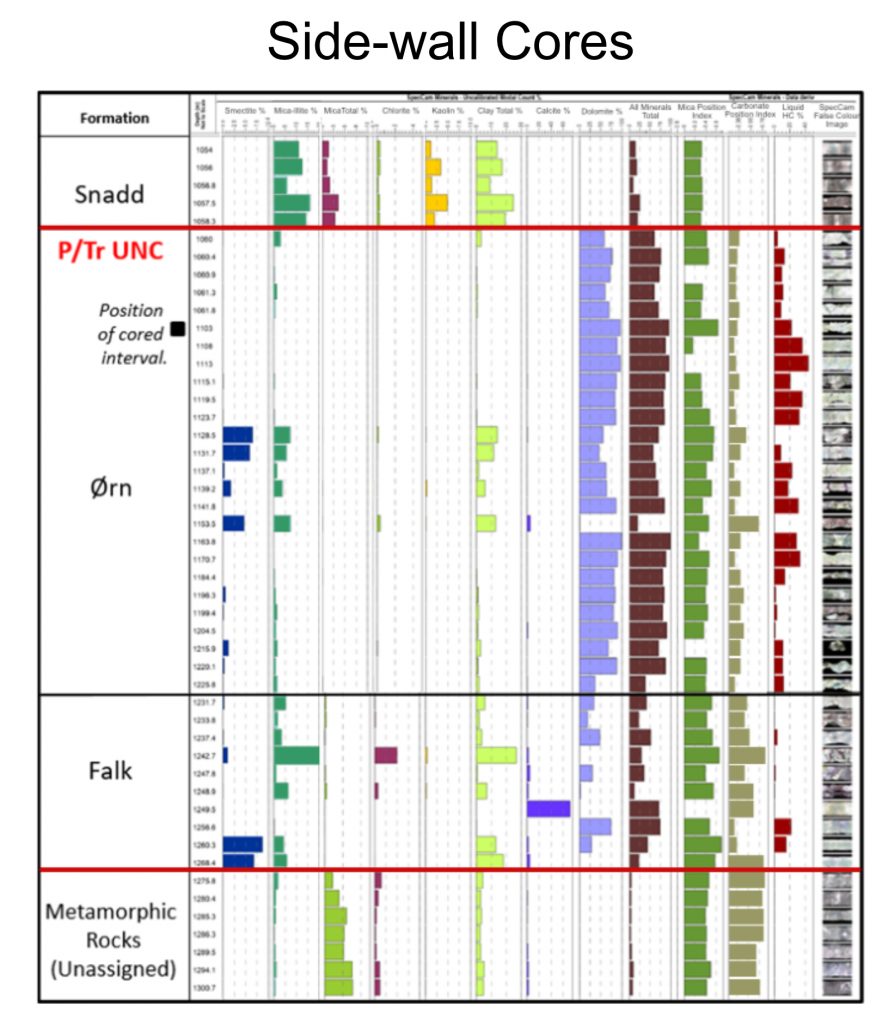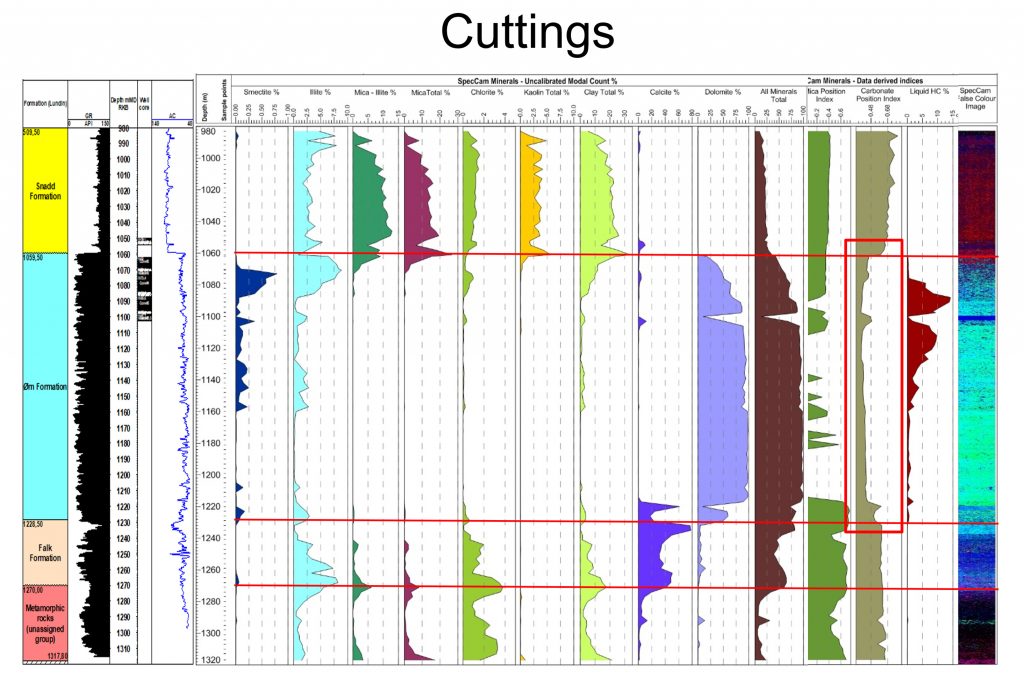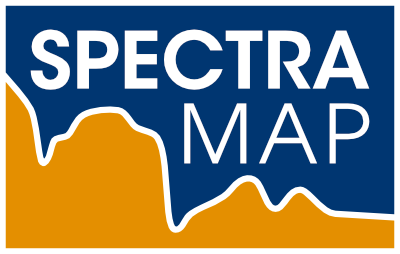In 2016 the Neiden exploration well 7220/6-2R was confirmed as an oil and gas discovery. Lundin Norway carried out extensive data collection, by means of coring, logging, and sampling, with the aim to prove oil in Triassic sandstone (Snadd formation) and Permian to Carboniferous carbonate (Ørn formation) reservoirs.
This reservoir case study presents results from Hyperspectral Imaging (HSI) of 115 cuttings, 43m of core, and 48 side-wall cores (SWC), taken from the basal Triassic to Basement section in the Ørn formation. These samples were scanned by the SpecCam to identify, quantify and map variations in the types of clays and carbonates, and the distribution of liquid and solid hydrocarbon.
The most informative HSI mineral information has come from the cuttings, due to their continuity and higher sampling frequency of the reservoir, compared to the more spatially restricted and fewer samples of SWCs. A clear pattern in changes of mineral type and content are seen in the HSI cuttings data through the reservoir section.
Compositional variations in the dolomite (see Carbonate Position Index) can be identified in the SpecCam data by changes in the wavelength position of the principal carbonate absorption and changes in reflectance at shorter visible-near infrared wavelengths. These variations, due to dolomite cation substitutions, typically of magnesium and iron, may denote heterogeneities in the limestone before dolomitisation, or subsequent changes in the dolomite through recrystallization and alteration processes.

Lundin 7220/6-2 R (Neiden) SpecCam results of sidewall cores across the basal Triassic to Basement section.

Lundin 7220/6-2 R (Neiden) SpecCam results of cuttings across the basal Triassic to Basement section.
These compositional heterogeneities in the dolomite, coupled with changes in the clay content of the carbonate rock shown by contributions of smectite, illite, mica, chlorite, kaolinite and calcite, appear to control the liquid hydrocarbon content through the reservoir.
Although the same mineralogical and hydrocarbon information through the reservoir section is seen in the SWC’s, these aren’t clear and don’t show the less complicated patterns in mineral type or the subtle compositional changes that are evident in the cuttings. The reason for these differences are varied, but could be due to the heterogeneity within the SWC sample at the cm scale and the longer sampling intervals between SWC samples, compared to cuttings samples that are averaging the reservoir over 3m but at regular sampling intervals.
The HSI data produced by the SpecCam delivers strong evidence for the assignment of the formations and nature of the boundaries recognised on logs, biostratigraphy and seismic interpretation, contributing great value to the Neiden exploration well’s search for oil, and understanding of sometimes subtle changes within lithologies. The continuous, highly detailed mineralogical and hydrocarbon information from the cuttings HSI data, provides a framework for the other sampling methods, and when completed early in the workflow, can help optimise selection of other point sampling depths.
For more information on the SpecCam’s capabilities, or for more examples of case studies, get in touch via enquiries@spectra-map.co.uk
